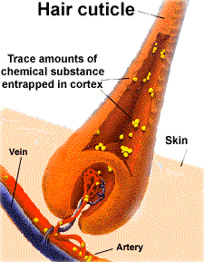Hair Testing

In recent years, the analysis of drugs in hair samples has become very successful with possible applications in forensic investigations (drug-related deaths, drug-facilitated crime, child protection, etc.), doping in sports, workplace drug testing and in clinical toxicology. Hair testing can complement over conventional blood and urine analysis as it enlarges the window of detection and, by segmentation, permits differentiation between long-term therapeutic use and single exposure. Hair analysis for drugs of abuse provides long-term information on an individual’s drug use including approx. time for drug administration/intake; its window of detection is high which typically, ranges from a week to several months.
In view of the same, NDTL has initiated an additional testing facility for the testing of drugs of abuse/other drugs in hair samples as per the Guidelines of Society of Hair Testing (SoHT). Screening method for drug of abuse in hair matrices has been developed and validation is in under process. Hair testing facility at NDTL is in under progress as a research wing and would soon be available for routine testing.
The collection of Hair sample is simple & convenient. The average growth rate of head hair is 1 cm each month, which is world-wide, accepted. A hair sample cut from the posterior vertex region of the head, close to the scalp is preferred as this region of the scalp is associated with least variation in growth rates. The amount of hair required for analysis is a pencil thickness of hair. It is important to collect sufficient hair in order to carry out routine tests and to allow for a repeat analysis or confirmation test.
The Benefits of Hair Testing
- Longer window of detection.
- Indefinite stability.
- Collection of sample is easy & non-invasive.
- Less prone to microbial growth.
- Less chances of manipulation of results.
- Transmission of disease is less while handling of samples.




